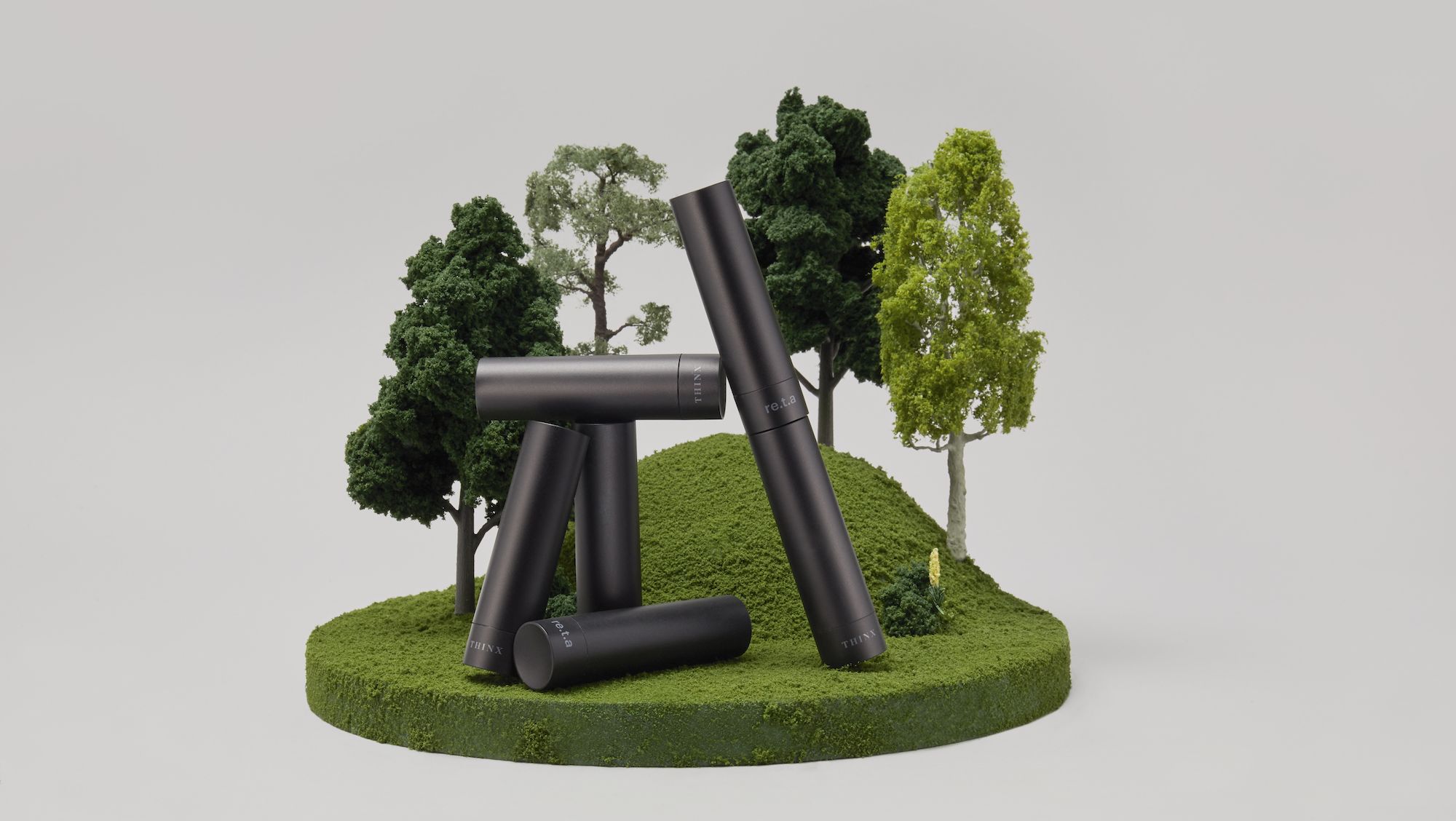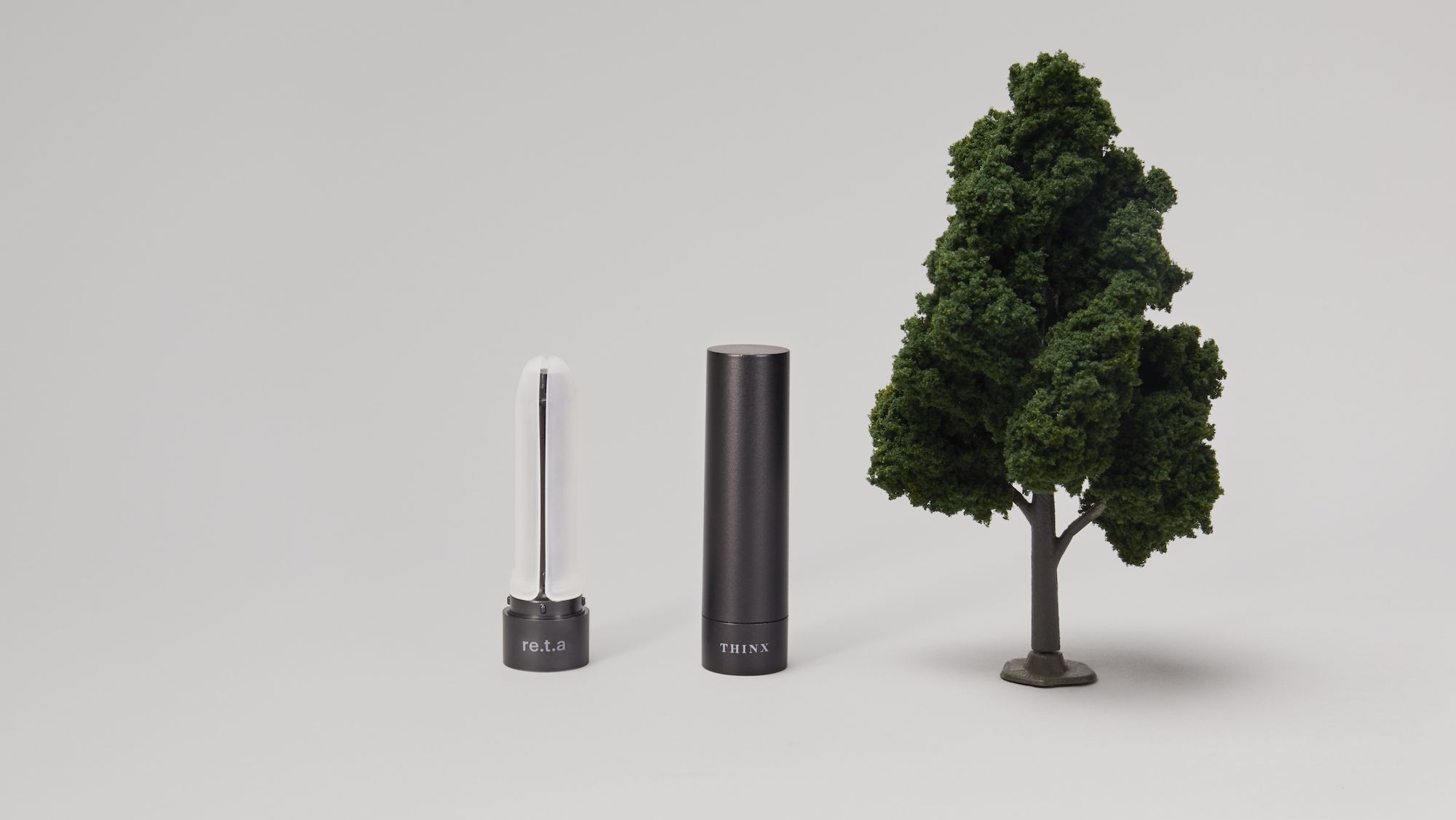This Reusable Tampon Applicator Is Kind of Genius
Thinx' re.t.a. could could help people with periods cut way back on plastic waste.

Lately, I've been trying to be a little greener. For me and for most of the people I know, reducing our carbon footprint by driving less, avoiding fast fashion, recycling, composting, and eating less meat has been top of mind in recent months. Which is why I’m slightly ashamed to admit that, though I was sort of aware that single-use tampon applicators were probably polluting the environment, I mostly avoided thinking about the fact that I was throwing away this non-recyclable piece of plastic several times a day, for nearly a week, every single month. I mean, really, how bad could the impact be?
Well, it turns out it's pretty bad! Of the $1.1 billion of tampons sold every year, nearly 88 percent of them have plastic applicators, according to Mother Jones, citing research from Kotex. And those applicators don’t break down once they’re in a landfill (or worse, in the ocean).
Sure, you could use a cup (some people swear by them!) but for me, old tampon-using habits die hard. So I was really excited when Thinx—makers of the period-proof underwear that I am unexpectedly obsessed with—released a reusable applicator this week.

Called re.t.a. (for “reusable tampon applicator”), the product is made of medical-grade silicon and has been cleared be the FDA. It’s also surprisingly chic! It’s made of three pieces that all detach and can be cleaned individually—a silicon part that you insert called the holder, a black peg that pushed the tampon through the holder, and a spherical cap.
You put any applicator-less tampon (like these Cora one, which cost a mere $6 for 18 of the regular-sized) into the holder, assume the tampon-insertion position, and push the peg up. That’s it. Cleaning when it’s in use consists of disassembling the three parts and washing them thoroughly with unscented soap, then letting it air dry. Between periods, you soak it in boiling water and then clean it off with rubbing alcohol.
I got a Thinx re.t.a. of my own to try and, as a smug conservationist, I am thrilled to announce that I love using it. It glides right in, is super easy to clean, and is a lot more comfortable than a cardboard applicator. And, of course, it’s way more environmentally-friendly than the plastic glide applicators I used to prefer.
Honestly, it's amazing that we don't talk more about the environmental impact of standard tampon applicators. According to Design Life-Cycle's handy guide to the life of tampons, it can take centuries for a single-use applicator to decompose—and that's not even talking about the sheer amount of crude oil and energy it took to produce the damn thing. Break those numbers down into the billions of tampons being used each year, and we have a major environmental crisis on our hands.
Get exclusive access to fashion and beauty trends, hot-off-the-press celebrity news, and more.
This green alternative isn't exactly cheap—re.t.a. retails for $60 on the Thinx website—but consider that you'll save on the slightly higher price of tampons with applicators, and that it lasts two years with proper care. Most importantly: You’ll be potentially cutting down on 58 percent of period waste by going applicator-free. It feels like a good investment. (Don't forget to grab a Thinx promo code before you buy.)
For more stories like this, including celebrity news, beauty and fashion advice, savvy political commentary, and fascinating features, sign up for the Marie Claire newsletter.
RELATED STORIES



Cady has been a writer and editor in Brooklyn for about 10 years. While her earlier career focused primarily on culture and music, her stories—both those she edited and those she wrote—over the last few years have tended to focus on environmentalism, reproductive rights, and feminist issues. She primarily contributes as a freelancer journalist on these subjects while pursuing her degrees. She held staff positions working in both print and online media, at Rolling Stone and Newsweek, and continued this work as a senior editor, first at Glamour until 2018, and then at Marie Claire magazine. She received her Master's in Environmental Conservation Education at New York University in 2021, and is now working toward her JF and Environmental Law Certificate at Elisabeth Haub School of Law in White Plains.